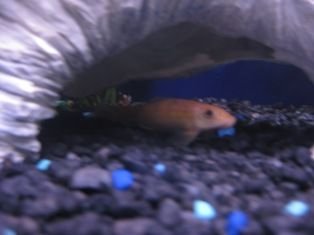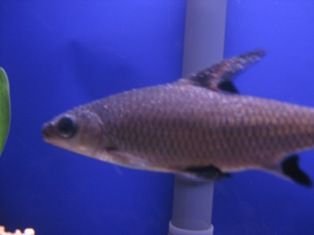Hello, new to the forum and hoping that someone can help me ASAP with a problem in my 55 gallon fish tank. I do frequent water checks and all the nitrates, nitrites, Ph, etc.. are all within normal parameters. The 55 gallon set up is fairly new (about 2 months), as we had to transfer our two balas over when we realized they were much too small for their old tank. We've had them for a year now. In with the two balas are 3 zebra danios, 2 upside down catfish,a brown knife fish, 2 CAE, and 2 angel fish. They are all eating healthy (as far as yesterday) but that is about all.
The fish (especially the Balas) have what appears to be little air bubbles all over their skin. The large CAE looks discolored. Even the knife fish looks as though he may have air bubbles on him. They all seem a little more lethargic than normal. I noticed one of the balas does the normal freak out routine - but this time he looks as those he may be itching its scales against the rocks/gravel. Many people say this is Ich, but I'm not noticing the white dots that I normally would think of when I see ich. These bubbles on their skin are transparent.
I am so worried about them, and we always take such good care of them - that I'm hoping I can nip this quick!
Also, we do frequent water changes (as we did with the old tank) of at least once every 2 weeks or so. Water temp always stays between 78-80. There are two dual filters (meant for 60 gallons) on each end of the tank.
I have begun to treat for a bacterial infection as I'm not sure what else may be happening? I've only done one treatment so far - am I headed in the right direction? Is there any more information that needs to be provided? If not, please help. Thank you in advance!
The fish (especially the Balas) have what appears to be little air bubbles all over their skin. The large CAE looks discolored. Even the knife fish looks as though he may have air bubbles on him. They all seem a little more lethargic than normal. I noticed one of the balas does the normal freak out routine - but this time he looks as those he may be itching its scales against the rocks/gravel. Many people say this is Ich, but I'm not noticing the white dots that I normally would think of when I see ich. These bubbles on their skin are transparent.
I am so worried about them, and we always take such good care of them - that I'm hoping I can nip this quick!
Also, we do frequent water changes (as we did with the old tank) of at least once every 2 weeks or so. Water temp always stays between 78-80. There are two dual filters (meant for 60 gallons) on each end of the tank.
I have begun to treat for a bacterial infection as I'm not sure what else may be happening? I've only done one treatment so far - am I headed in the right direction? Is there any more information that needs to be provided? If not, please help. Thank you in advance!



 /www.petplanet...atics/51350.jpg
/www.petplanet...atics/51350.jpg